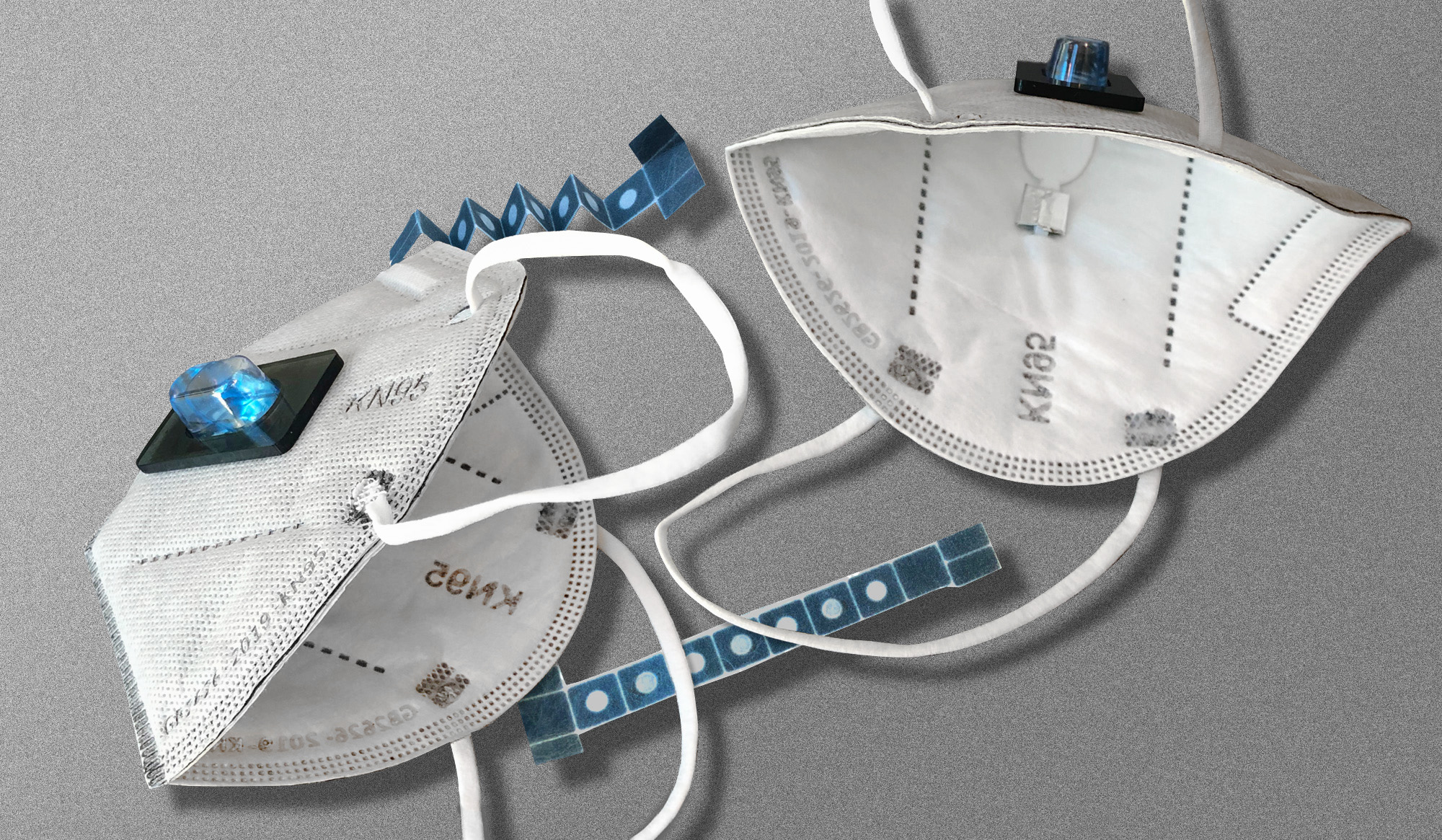Multifunction masks
Tiny sensors embedded in face coverings and other wearable items can diagnose covid-19 and detect other threats.

Face masks have been an invaluable tool against covid-19, but what if they could detect it as well as helping to prevent its spread?
Engineers at MIT and Harvard have designed one that can do just that. Tiny, disposable sensors embedded in the mask can detect exposure to the SARS-CoV-2 virus and diagnose the disease. They could also be incorporated into clothing and adapted to detect other viruses or toxins.
The sensors are based on a technique that James Collins of MIT’s Institute for Medical Engineering and Science began developing several years ago to create paper diagnostics for viruses such as Ebola and Zika. They’re made of freeze-dried cellular components that remain stable for months until they are activated by water, at which point they interact with a target molecule such as a DNA sequence and produce a signal such as a change in color.
In the case of the covid detector, freeze-dried components that react with the virus are embedded in a paper mask, surrounded by a ring of silicone elastomer so the sample can’t evaporate or diffuse away from the sensor. When the wearer pushes a button, a small reservoir of water is released to rehydrate the sensor, which analyzes accumulated breath droplets on the inside of the mask and produces a result within 90 minutes. In the interest of privacy, results are displayed on the inside of the mask.
“This test is as sensitive as the gold-standard, highly sensitive PCR tests, but it’s as fast as the antigen tests that are used for quick analysis of covid-19,” says Peter Nguyen, a research scientist at Harvard University’s Wyss Institute for Biologically Inspired Engineering. Nguyen, Collins, and Luis Soenksen, PhD ’20, of MIT’s Abdul Latif Jameel Clinic for Machine Learning in Health are the lead authors of the paper describing the work.
The prototypes developed in this study also include garments with sensors placed on the outside to detect exposure from the environment. This could be especially useful in lab coats worn by health-care workers. The researchers can swap in sensors for other pathogens, including influenza, Ebola, and Zika, or sensors they have developed to detect organophosphate nerve agents.
“We’ve demonstrated that we can freeze-dry a broad range of synthetic-biology sensors to detect viral or bacterial nucleic acids, as well as toxic chemicals, including nerve toxins,” Collins says. “We envision that this platform could enable next-generation wearable biosensors for first responders, health-care personnel, and military personnel.”
The researchers have filed for a patent on the technology and hope to work with a company to develop it further. The face mask is most likely the first application that could be made available, Collins says.
Keep Reading
Most Popular
Large language models can do jaw-dropping things. But nobody knows exactly why.
And that's a problem. Figuring it out is one of the biggest scientific puzzles of our time and a crucial step towards controlling more powerful future models.
How scientists traced a mysterious covid case back to six toilets
When wastewater surveillance turns into a hunt for a single infected individual, the ethics get tricky.
The problem with plug-in hybrids? Their drivers.
Plug-in hybrids are often sold as a transition to EVs, but new data from Europe shows we’re still underestimating the emissions they produce.
Stay connected
Get the latest updates from
MIT Technology Review
Discover special offers, top stories, upcoming events, and more.